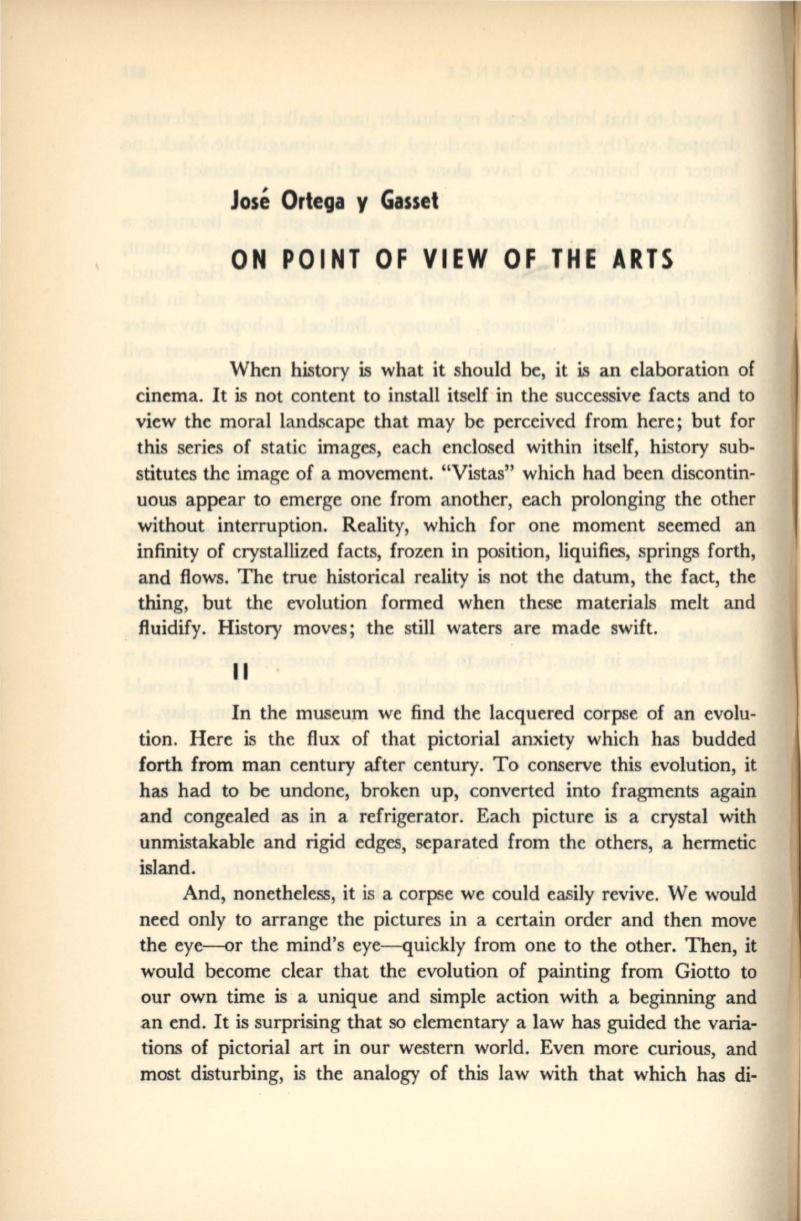
Jose Ortega
y
Gasset
ON POINT OF VIEW OF THE ARTS
When history is what it should be, it is an elaboration of
cinema. It is not content to install itself in the successive facts and to
view the moral landscape that may be perceived from here; but for
this series of static images, each enclosed within itself, history sub–
stitutes the image of a movement. "Vistas" which had been discontin–
uous appear to emerge one from another, each prolonging the other
without interruption. Reality, which for one moment seemed an
infinity of crystallized facts, frozen in position, liquifies, springs forth,
and flows. The true historical reality is not the datum, the fact, the
thing, but the evolution formed when these materials melt and
fluidify. History moves; the still waters are made swift.
II
In the museum we find the lacquered corpse of an evolu–
tion. Here is the flux of that pictorial anxiety which has budded
forth from man century after century. To conserve this evolution, it
has had to be undone, broken up, converted into fragments again
and congealed as in a refrigerator. Each picture is a crystal with
unmistakable and rigid edges, separated from the others, a hermetic
island.
And, nonetheless, it is a corpse we could easily revive. We would
need only to arrange the pictures in a certain order and then move
the eye-or the mind's eye-quickly from one to the other. Then, it
would become clear that the evolution of painting from Giotto to
our own time is a unique and simple action with a beginning and
an end. It is surprising that so elementary a law has guided the varia–
tions of pictorial
art
in our western world. Even more curious, and
most disturbing, is the analogy of this law with that which has di-


